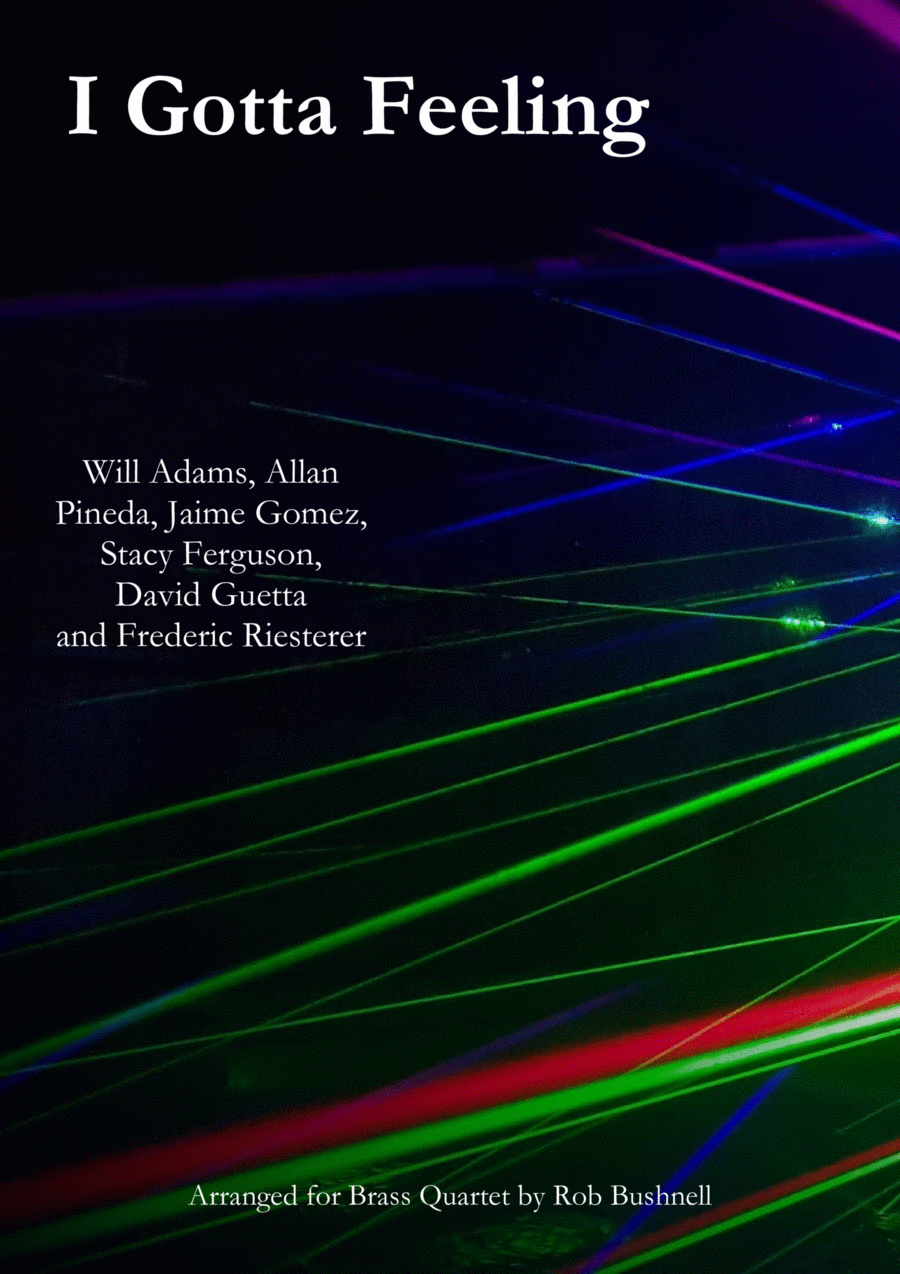Baritone Horn TC,Bass Trombone,Cornet,Euphonium,Trumpet,Tuba - Level 3 - Digital Download SKU: A0.752383 By The Black Eyed Peas. By Allan Pineda, David Guetta, Frederic Riesterer, Jaime Gomez, Stacy Ferguson, and Will Adams. Arranged by Rob Bushnell. Hip-Hop,Pop,R & B. 38 pages. RBMusic #5210549. Published by RBMusic (A0.752383). Produced by David Guetta and Frédéric Riesterer, I Gotta Feeling is the second single from the album The E.N.D., the fifth released by The Black Eyed Peas. It debuted at number two on the Billboard Hot 100, behind the group’s song Boom Boom Pow, making the one of only eleven artists who have held the top two positions at the same time. It reached number one in the US charts and won the group the Grammy for the Best Pop Performance by a Duo or Group with Vocals. The album also won Best Pop Vocal Album and Best Short Form Music Video as well as being nominated for Album of the Year and Record of the Year. I Gotta Feeling became the first song to sell over 7 million digital copies in the United States in March 2011 and holds the record as the best digital seller in history. It spent 14 consecutive weeks at the of the Billboard Hot 100, making it the longest-running number-one single of 2009. This arrangement includes oompah sections, as well as alternative parts for tenor horn, treble-clef euphonium, and tubas (both bass and treble clef). A recording of the original song can be found on YouTube: https://www.youtube.com/watch?v=uSD4vsh1zDA. Other searchable terms: World Music Awards, Frederic Riesterer, William Adams, Allan Pineda, Jaime Gomez, Stacy Ferguson, will.i.am, Square Prod, Paris, France, Metropolis Studios, London, England, United Kingdom, Take a Dive, Bryan Pringle, The Police, Every Breath You Take, Five Stairsteps, Ooh Child, I'll Go Crazy If I Don't Go Crazy Tonight, Kick-off Party, The Oprah Winfrey Show, Super Bowl XLV, FIRST Robotics Competition World Championships, Queen Elizabeth II, Diamond Jubilee, Jessie J, Southeast Asian Games, J Rey, Soul, Jessica Reynoso, Apl.de.ap, Fergie, Taboo, Hollywood Boulevard, Dipdive, Mikey Mee, Little Minx, Katy Perry, Kid Cudi, Gossip, Dean Caten, Dan Caten, Dsquared2, RuPaul, Ongina, CBS, CNN, Winter Olympics, Vancouver, Sochi, The Big Band Theory, Miami Medical, Horrid Henry, G-Force
